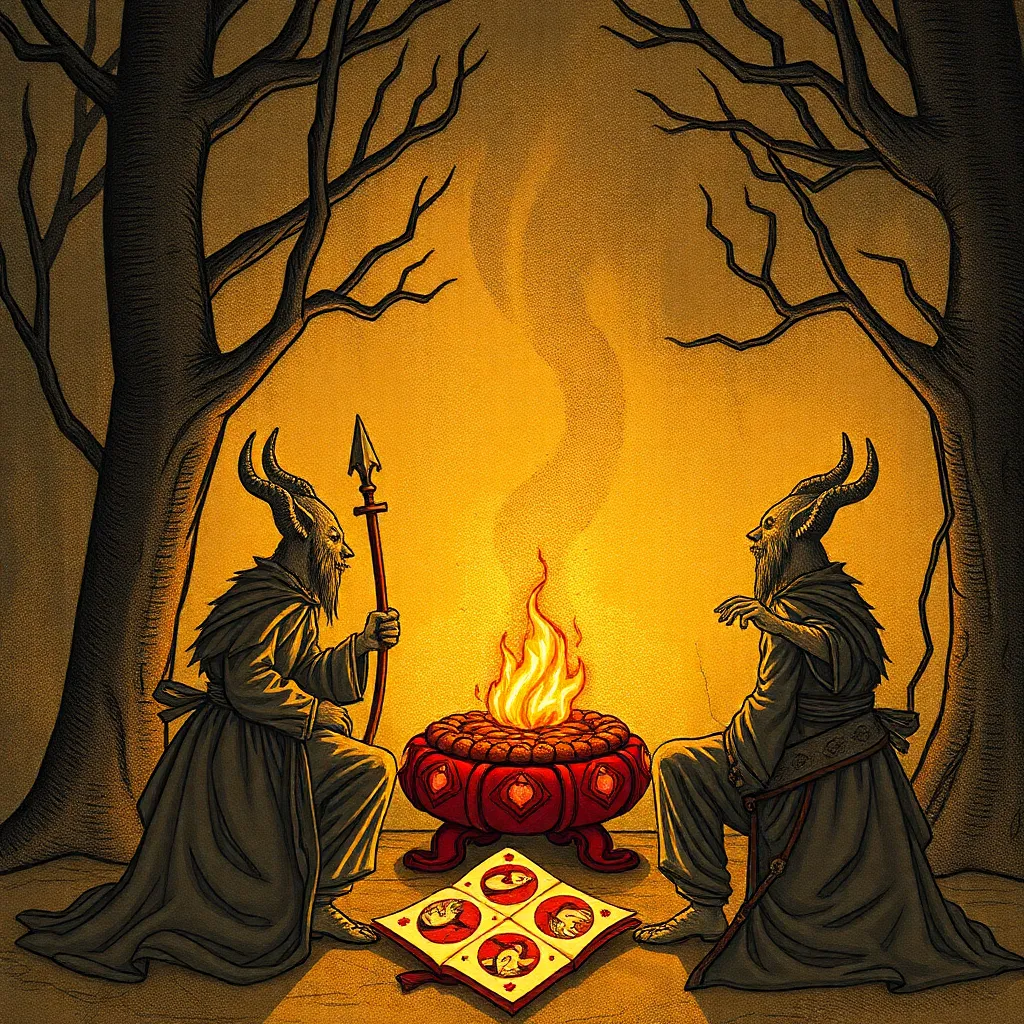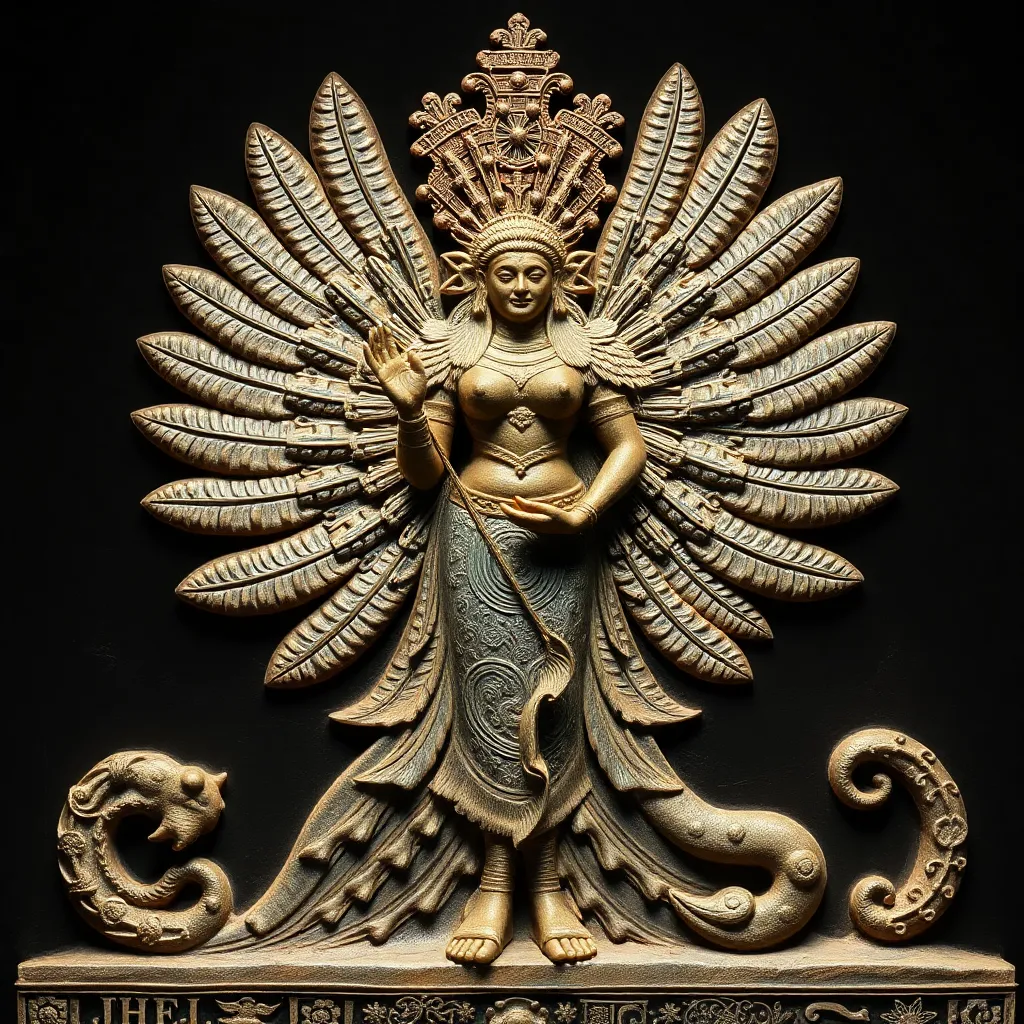Beyond the Hearth: Brownies in Medieval & Renaissance Literature
I. Introduction
In the rich tapestry of folklore, brownies stand out as fascinating household spirits, often depicted as small, helpful beings that assist in domestic chores. These creatures, deeply rooted in myth and tradition, have made significant appearances in medieval and Renaissance literature, symbolizing various cultural values and societal norms of their times. This article aims to explore the multifaceted representations of brownies, their evolution from oral tradition to written literature, and their lasting impact on literary narratives.
II. Historical Context of Brownies
A. Origins of brownies in folklore and mythology
Brownies originate from Scottish folklore, where they are described as small, humanoid figures that inhabit homes and farms, performing chores at night in exchange for small offerings of food. Their mythological roots can be traced back to various household spirits found in different cultures, such as the hobgoblins of England and the kobolds of Germany.
B. The role of household spirits in medieval life
In medieval society, household spirits like brownies were believed to play a crucial role in maintaining the household’s prosperity and well-being. They were seen as protectors of the home, embodying the connection between humans and the supernatural. Their presence was often welcomed, as they were thought to bring good fortune and aid in daily tasks.
C. Transition from oral tradition to written literature
As societies moved towards written forms of communication, the oral traditions surrounding brownies began to be documented in literature. This transition marked a significant shift in how these creatures were perceived and represented, allowing for greater exploration of their symbolic meanings in texts.
III. Brownies in Medieval Literature
A. Appearance of brownies in medieval texts
1. Notable works and authors
Brownies can be found in several medieval texts, including works by Geoffrey Chaucer and Robert Henryson. Chaucer’s The Canterbury Tales features references to household spirits, while Henryson’s fables often highlight the moral lessons intertwined with such characters.
2. Thematic representations
In these texts, brownies often symbolize domesticity, labor, and the balance between the human and supernatural realms. They serve as reminders of the importance of hard work and the value of community, often appearing in tales that emphasize the virtues of diligence and cooperation.
B. Function of brownies in storytelling
1. Symbolism of domesticity and labor
Brownies frequently represent the unseen labor that sustains households. Their activities underscore the importance of domestic work, often overlooked in favor of more public endeavors. They act as a testament to the value of contributions made within the home.
2. Moral lessons and cautionary tales
Many stories featuring brownies convey moral lessons, warning against greed or ingratitude. For instance, a common theme is the dire consequences faced by those who fail to honor the brownies’ contributions, illustrating the idea that neglecting domestic duties can lead to misfortune.
IV. The Renaissance Shift: Evolving Perspectives
A. Changes in societal attitudes towards domestic spirits
During the Renaissance, societal attitudes towards domestic spirits began to shift. As humanism gained prominence, there was a growing interest in individualism and the human experience, which influenced how brownies were portrayed in literature.
B. Influence of humanism on literary portrayals of brownies
Humanist thinkers emphasized the importance of rationality and human agency, leading to reinterpretations of brownies. They were sometimes portrayed as more autonomous characters, reflecting the changing dynamics of power and responsibility within households.
C. Key Renaissance texts featuring brownies
Notable Renaissance texts, such as A Midsummer Night’s Dream by William Shakespeare, include elements of the supernatural that echo the characteristics of brownies. These works often blend fantasy and reality, showcasing the complexities of human emotions and societal structures.
V. Brownies and Gender Dynamics
A. Gender roles depicted through the character of brownies
Brownies often embody traditional gender roles, representing the idealized domestic worker. Their portrayal reflects societal expectations of women during the medieval and Renaissance periods, where domestic duties were primarily relegated to females.
B. The relationship between female characters and brownies
In many narratives, female characters interact closely with brownies, establishing a bond that highlights the shared responsibilities of domestic life. These relationships can also serve to empower female characters, as they navigate the challenges of their societal roles.
C. Feminist interpretations of brownies in literature
Feminist scholars have explored the role of brownies as reflections of women’s labor and their often-unacknowledged contributions to society. By examining these characters through a feminist lens, one can uncover deeper insights into the struggles and strengths of women in historical contexts.
VI. The Intersection of Fantasy and Reality
A. Brownies as reflections of societal norms and challenges
Brownies often mirror the societal norms and challenges of their times, serving as a lens through which to examine issues of labor, gender, and domesticity. Their existence in literature provides insight into the collective consciousness of medieval and Renaissance societies.
B. The blending of the supernatural with everyday life
The presence of brownies in everyday narratives blurs the line between the supernatural and the mundane, illustrating how folklore permeates daily life. This blending invites readers to consider the significance of myth in shaping cultural identity and values.
C. The impact of folklore on contemporary literature
Modern literature continues to draw inspiration from folklore, including the character of brownies. Contemporary adaptations often reinterpret these figures, exploring new themes and contexts while retaining their core characteristics.
VII. Legacy of Brownies in Literature
A. Influence on later literary works and genres
Brownies have left an indelible mark on later literary works, influencing genres such as fantasy and children’s literature. Their characteristics can be seen in various modern depictions of magical creatures, reflecting the enduring appeal of these household spirits.
B. Modern adaptations and reinterpretations of brownies
In recent years, brownies have been reimagined in numerous forms of media, from literature to film. These adaptations often challenge traditional portrayals, presenting brownies as more complex and relatable characters.
C. Continuing relevance of brownie characters in popular culture
Today, brownies remain a popular subject in folklore studies and popular culture, inspiring a variety of artistic expressions. Their enduring presence speaks to humanity’s fascination with the blend of the ordinary and the extraordinary.
VIII. Conclusion
This exploration of brownies in medieval and Renaissance literature reveals their significant role as symbols of domesticity, labor, and societal norms. From their origins in folklore to their adaptations in modern narratives, brownies continue to captivate audiences and provoke thoughtful discussions about gender, culture, and the nature of work. As we delve deeper into the stories of these enchanting creatures, we are reminded of the rich interplay between folklore and literature, inviting further exploration of how these themes resonate in contemporary society.



